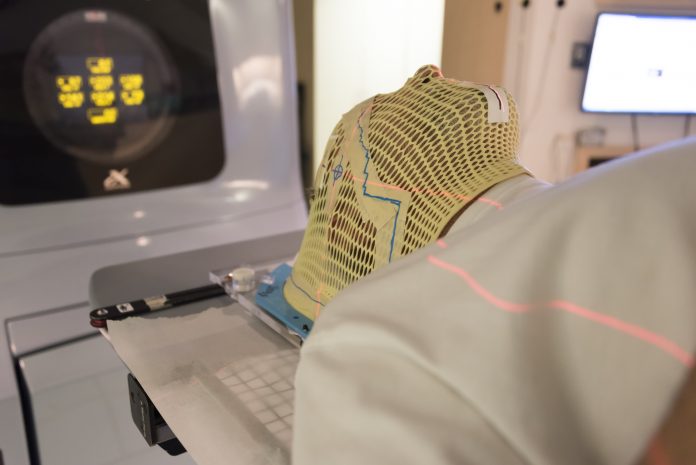Adrian Smith, General Manager, Hologic UK and Ireland, keeps us up to speed with grasping the possibilities of artificial intelligence and other innovations in cancer screening
COVID-19 has been a catalyst for change, with the diagnostics industry taking centre stage and rising to the challenge of a global pandemic. One of the positive outcomes has been the amount of time and focus the sector has dedicated to finding new technologies and solutions to improve operational and clinical outcomes.
The lessons learned from the pandemic now need to be taken forward to improve preventative health programmes, including breast and cervical cancer screening, over the coming years.
COVID-19 has not only brought more focus to the role of new technologies and solutions, but also on their rapid adoption so they can be fully leveraged in the fight against the pandemic. The government can do more to support cutting edge innovation in cancer screening, particularly in the field of artificial intelligence (AI) which can be utilised to tackle delays and improve long-term outcomes in breast and cervical cancer screening programmes.
Cervical and breast cancer screening are well suited to the application of AI, given both require highly trained medical professionals to identify rare and subtle changes visually, which can be challenging clinically. AI and other innovations could help to significantly improve workflow efficiencies, accelerate disease detection and provide a more accurate diagnosis.
Workflow prioritisation
The first area where AI-guided imaging can play a role is workflow prioritisation. AI, along with increased screening units and mammographers, could increase breast cancer screening capacity by removing the need for review by two radiologists. When used as part of a screening programme, AI could effectively and efficiently highlight the areas that are of particular interest for the reader, in the case of breast screening, or cytotechnologist when considering cervical screening.
Based on a comparison with the average time taken to read a breast screening image, the use of AI could mean up to 13% less time is needed to read a mammogram. (1) Radiologists would be able to report more cases per day and the efficiency with which images are reviewed would be improved resulting in significant overall time savings for clinicians.
“The government can do more to support cutting edge innovation in cancer screening, particularly in the field of artificial intelligence (AI).”
For digital cytology in cervical cancer screening, the system is able to evaluate tens of thousands of cells from a single patient in a matter of seconds and present the most relevant diagnostic material to a trained medical professional for the final diagnosis. The job of a cytotechnologist is to build a case based on the cells they see. Utilising these tools, we are finding that cytotechnologists and pathologists are significantly increasing their efficiency without compromising accuracy.
Reducing overdiagnosis
An additional benefit of AI in breast cancer screening would be in reducing ‘overdiagnosis’.
Over a given three-year period, less than 1% of women screened in the UK will have cancer detected through breast screening. Around eight in 10 of these are invasive cancers. For every breast cancer death prevented through screening, three women will be over diagnosed which means they will be subjected to unnecessary tests and interventions which could be avoided. These interventions cause unnecessary fear and anxiety, as well as increasing the burden on the health service. We need a better way to triage and prioritise women who are most at risk, whilst avoiding overdiagnosis and intervention in the majority of the screening population who are at lower risk.
By using AI to initially review mammograms, screening may become more specific, faster and accurate.
Risk stratification
Another key opportunity for applying AI and innovation in technology is risk stratification. This could help to identify women who are particularly at risk, prioritising them for a more specific and relevant treatment pathway. Conversely, it may allow the screening interval for those women at lower risk to be extended, creating a more efficient and targeted breast screening programme.
The Richards Review of adult screening programmes highlighted this exact potential, saying “Genomics, family history and breast density (as measured on mammography) provide opportunities for risk stratification. Women identified as being at elevated risk of breast cancer should then be offered tailored screening within the NHS breast screening programme.” (2)
For example, a woman having dense breast tissue is at a greater risk than someone who has two immediate family members who have suffered from breast
cancer. (3) One simple way to ensure that those at the highest risk of developing breast cancer are prioritised for screening would be to analyse all women with breast density software. Those with dense breast tissue could then potentially be offered a different diagnostic and treatment pathway to reflect their increased likelihood of developing cancer.
Grasping the possibilities of AI
As we emerge from the pandemic, and the government continues to develop its Women’s Health Strategy, policy-makers and health officials have an important opportunity to grasp the possibilities that diagnostic innovation offers for building more resilient, targeted and efficient programmes of preventative care, including cancer screening.
AI is a fundamental piece of advancing innovation in healthcare. Companies offering AI solutions will be increasingly at the forefront of supporting the work of health services to improve patient experiences and outcomes.











